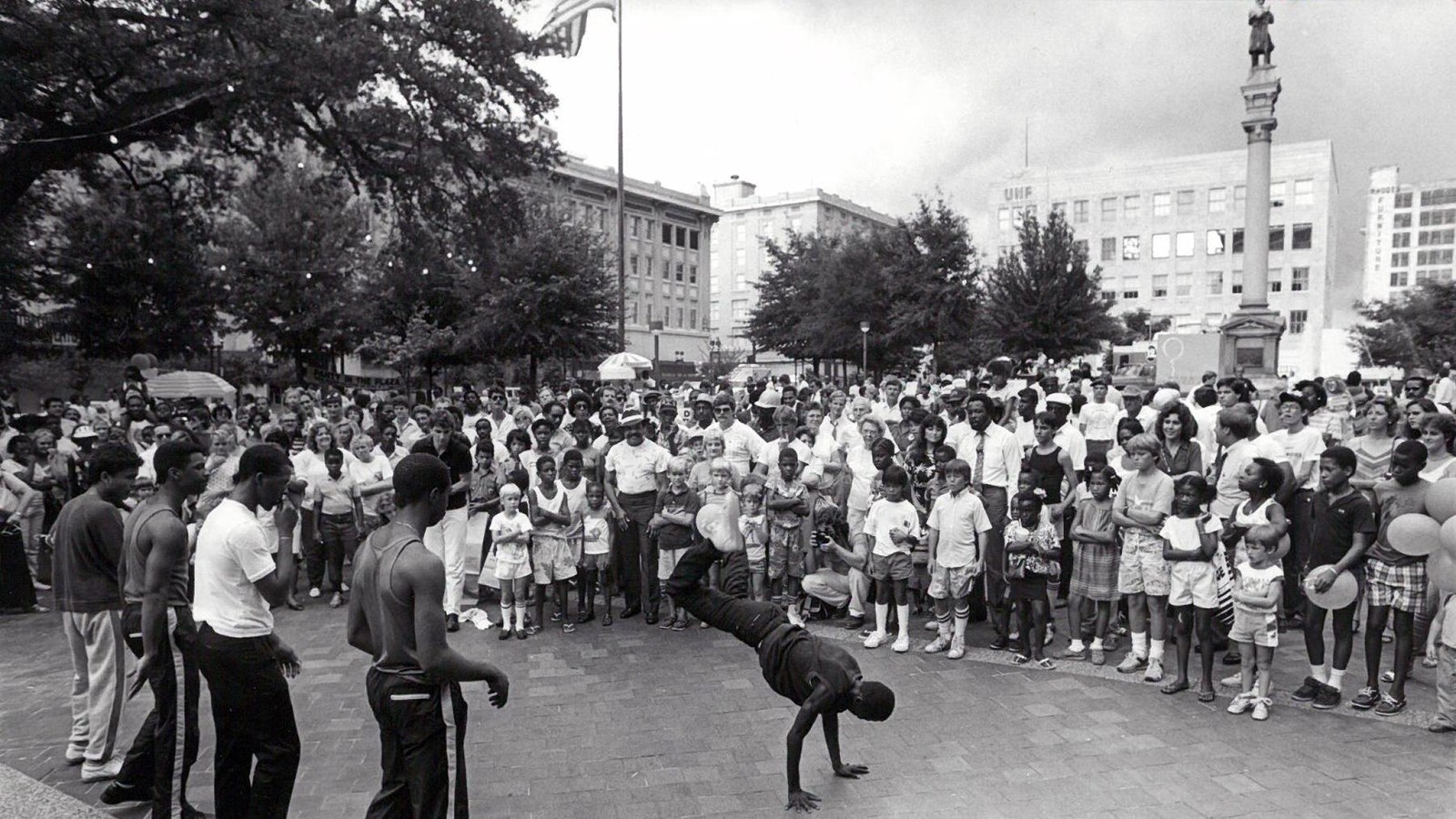Last updated: February 10, 2021
Place
Florida: James Weldon Johnson Park

City of Jacksonville
On August 27, 1960 following weeks of student led sit-ins at segregated downtown lunchcounters, the largest civil rights demonstration in the history of the city of Jacksonville, Florida took place, with nearly 3,000 protestors peacefully demonstrating in what was then known as Hemming Plaza, now James Weldon Johnson Park. Both the sit-ins and the demonstration were part of a coordinated effort to challenge racial discrimination, serving as a catalyst for the eventual integration of public accommodations citywide.
Earlier that morning an interracial group of young people, led by African American high school student Rodney Hurst, and representing the Youth Council of the National Association for the Advancement of Colored People (NAACP), conducted a peaceful protest by sitting at a whites-only lunch counter in the W.J. Grant Department Store in downtown Jacksonville. This sit-in was part of a direct action campaign created by Rutledge Pearson, an African American social studies teacher and prominent NAACP leader in the city, who was inspired by the successes of the lunch counter sit-ins in North Carolina the previous month. Pearson believed that this form of direct action was the best way to challenge segregation in Jacksonville.
The peaceful protestors at Grant’s faced strong opposition to their sit-in on that fateful August morning, as they were verbally abused and spat on by other patrons. When Grant’s refused to provide food service to the group and closed the establishment, what happened next would become known as “Ax Handle Saturday,” irrevocably altering the course of Jacksonville's civil rights history.
When the young men and women left the establishment they were brutally attacked by a mob that included Ku Klux Klan members and men from the area’s White Citizen Councils ,carrying baseball bats and wooden ax handles. The mob, which had first directed its ire only at the protestors, began attacking any Black person they saw on the street. Victims begged nearby police officers for help. However, the police never intervened.
Nearby in James Weldon Johnson Park, Ku Klux Klan members began a coordinated attack on the peaceful protestors, running them down and beating them with ax handles and bats. When Klan members chased victims into an all-Black neighborhood, they were prevented from further attacks by the Boomerangs, a Black gang which defended the protestors and neighborhood through armed self-defense.
The city used 200 police officers to finally quell the violence, 62 people were arrested, mostly Black, with many more people suffering bodily injuries from the vicious ax handle attacks. The failure of the police force to intervene early on, thus giving the white mob more time to attack demonstrators, is a chief cause of the wholesale violence that day, and led state NAACP leaders to converge on the city of Jacksonville as they sought to advise local officials on how to move forward to prevent retributive violence. After civic elites initially refused the NAACP’s demands to integrate, the organization then called for a citywide boycott of all segregated businesses, and the Chamber of Commerce, fearing the effect this could have on the local economy, acquiesced to demands and met with NAACP officials and local Black organizations to reach a resolution, which they eventually did.
The events of August 27, 1960, better known as Ax Handle Saturday, at James Weldon Johnson Park and the surrounding downtown area, are significant as a major catalyst for the larger Black Freedom Struggle in Jacksonville, bringing the city’s leaders to the table with civil rights groups to begin the necessary work of integration.
James Weldon Johnson Park became part of the African American Civil Rights Network in August 2020.
The African American Civil Rights Network recognizes the civil rights movement in the United States and the sacrifices made by those who fought against discrimination and segregation. Created by the African American Civil Rights Act of 2017, and coordinated by the National Park Service, the Network tells the stories of the people, places, and events of the U.S. civil rights movement through a collection of public and private elements.
